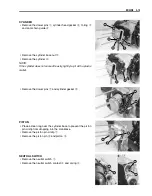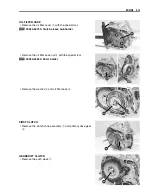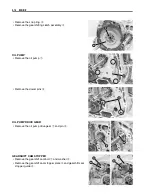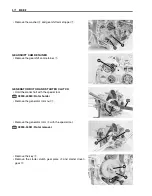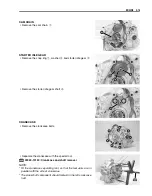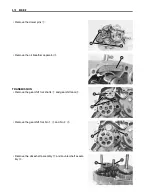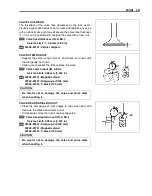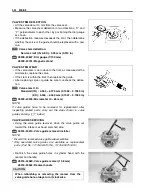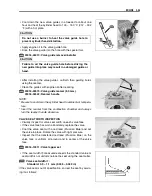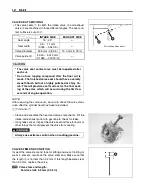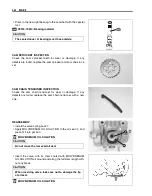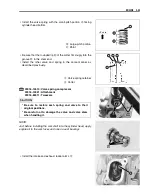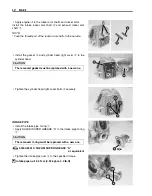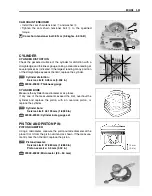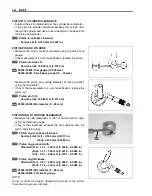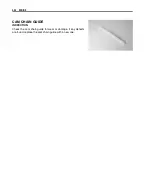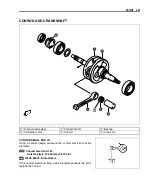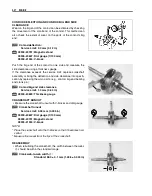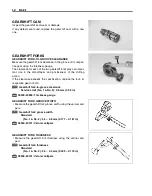
ENGINE 3-26
• Cool down the new valve guides in a freezer for about one
hour and heat the cylinder head to 100 – 150 °C (212 – 302
°F) with a hot plate.
• Apply engine oil to the valve guide hole.
• Drive the valve guide into the hole with the special tool.
\
09916-44310: Valve guide remover/installer
• After installing the valve guides, re-finish their guiding bores
using the reamer.
• Clean the guides with engine oil after reaming.
\
09916-34570: Valve guide reamer (5.0 mm)
09916-34542: Reamer handle
NOTE:
* Be sure to cool down the cylinder head to ambient air tempera-
ture.
* Insert the reamer from the combustion chamber and always
turn the reamer handle clockwise.
VALVE SEAT WIDTH INSPECTION
• Visually inspect for valve seat width on each valve face.
• If the valve face has worn abnormally, replace the valve.
• Coat the valve seat with a red lead (Prussian Blue) and set
the valve in place. Rotate the valve with light pressure.
• Inspect that the transferred red lead (Prussian Blue) on the
valve face is uniform all around and in center of the valve
face.
\
09916-10911: Valve lapper set
• If the seat width
W
measured exceeds the standard value or
seat width is not uniform, reface the seat using the seat cutter.
Valve seat width
W
:
Standard: 0.9 – 1.1 mm (0.035 – 0.043 in)
If the valve seat is out of specification, correct the seat by servic-
ing it as follows:
Do not use a burner to heat the valve guide hole to
prevent cylinder head distortion.
Failure to oil the valve guide hole before driving the
new guide into place may result in a damaged guide or
head.

